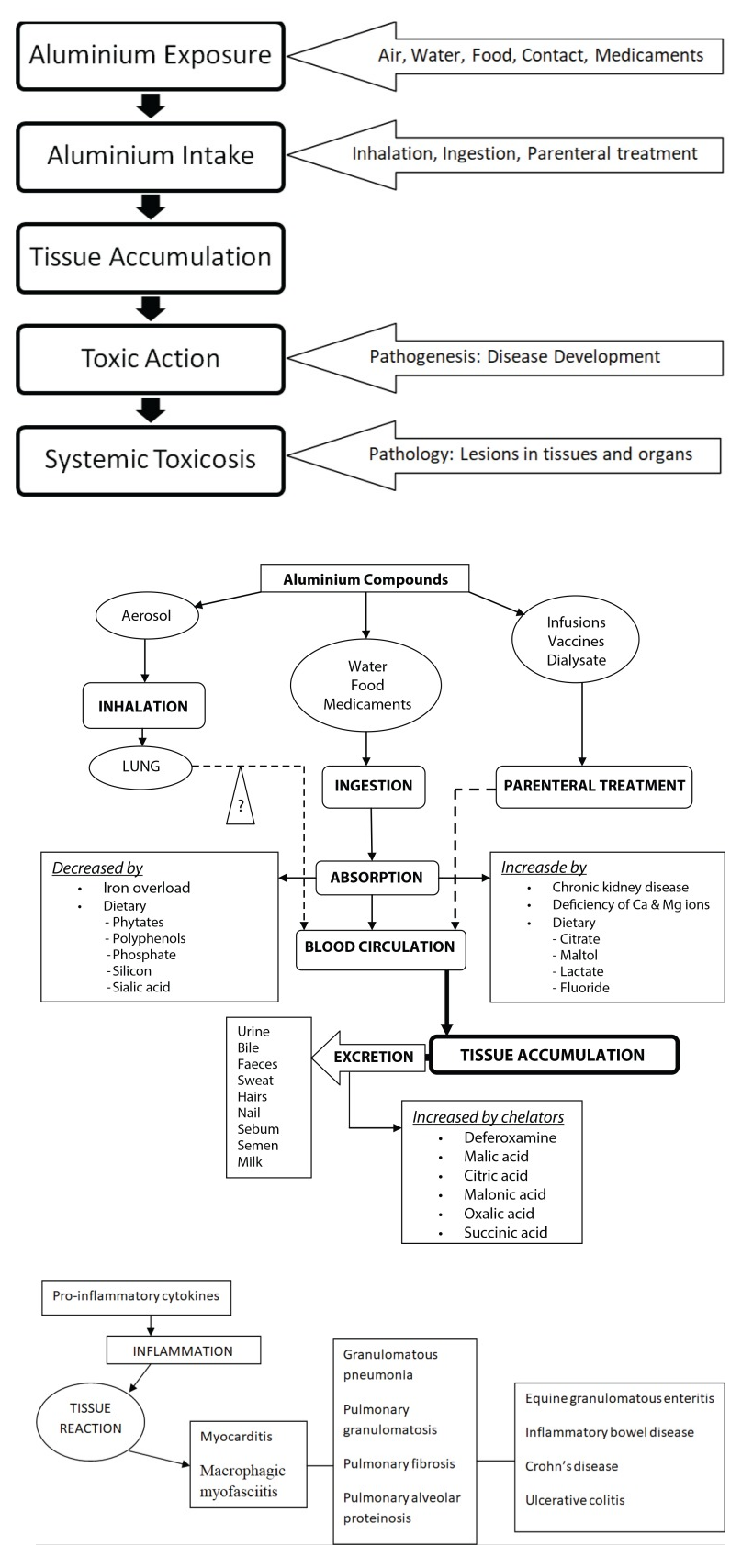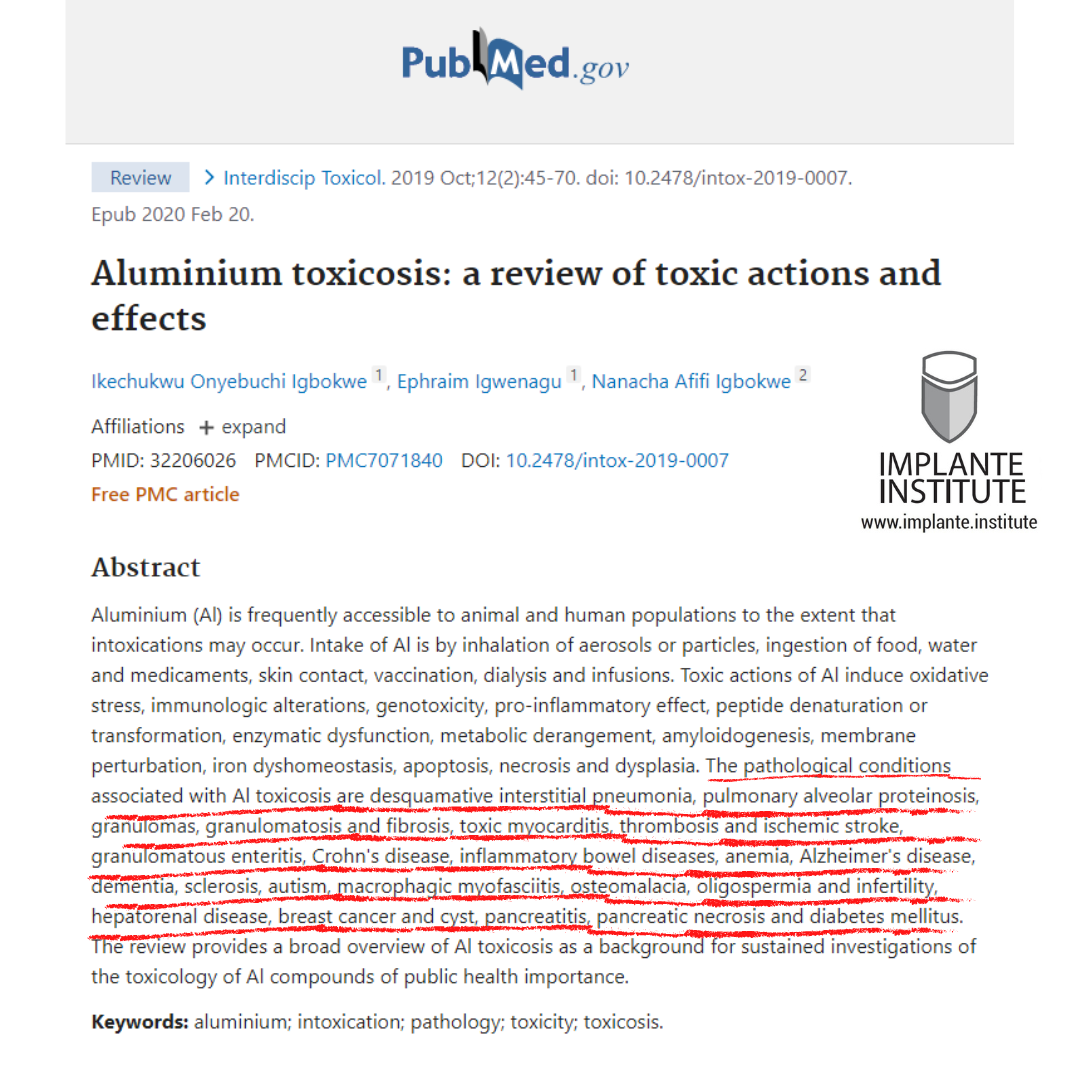Aluminium toxicosis: a review of toxic actions and effects
Link: https://www.ncbi.nlm.nih.gov/pmc/articles/PMC7071840/
Interdiscip Toxicol. 2019 Oct;12(2):45-70. doi: 10.2478/intox-2019-0007.
Ikechukwu Onyebuchi Igbokwe 1, Ephraim Igwenagu 1, Nanacha Afifi Igbokwe 2
PMID: 32206026 PMCID: PMC7071840 DOI: 10.2478/intox-2019-0007
Abstract
Aluminium (Al) is frequently accessible to animal and human populations to the extent that intoxications may occur.
Intake of Al is by inhalation of aerosols or particles, ingestion of food, water and medicaments, skin contact, vaccination, dialysis and infusions.
Toxic actions of Al induce oxidative stress, immunologic alterations, genotoxicity, pro-inflammatory effect, peptide denaturation or transformation, enzymatic dysfunction, metabolic derangement, amyloidogenesis, membrane perturbation, iron dyshomeostasis, apoptosis, necrosis and dysplasia.
The pathological conditions associated with Al toxicosis are desquamative interstitial pneumonia, pulmonary alveolar proteinosis, granulomas, granulomatosis and fibrosis, toxic myocarditis, thrombosis and ischemic stroke, granulomatous enteritis, Crohn's disease, inflammatory bowel diseases, anemia, Alzheimer's disease, dementia, sclerosis, autism, macrophagic myofasciitis, osteomalacia, oligospermia and infertility, hepatorenal disease, breast cancer and cyst, pancreatitis, pancreatic necrosis and diabetes mellitus.
The review provides a broad overview of Al toxicosis as a background for sustained investigations of the toxicology of Al compounds of public health importance.
Keywords: aluminium; intoxication; pathology; toxicity; toxicosis.

See free analyzes at: https://implante.institute/analises?perm_status=1

